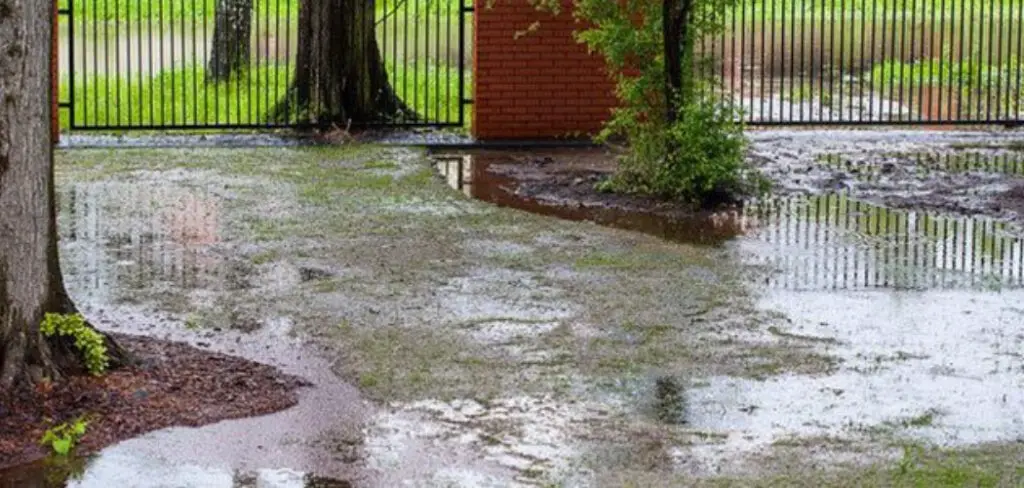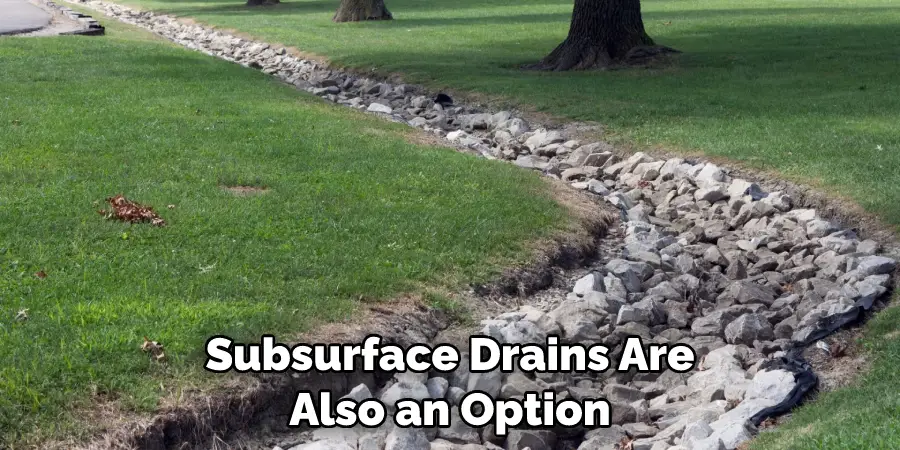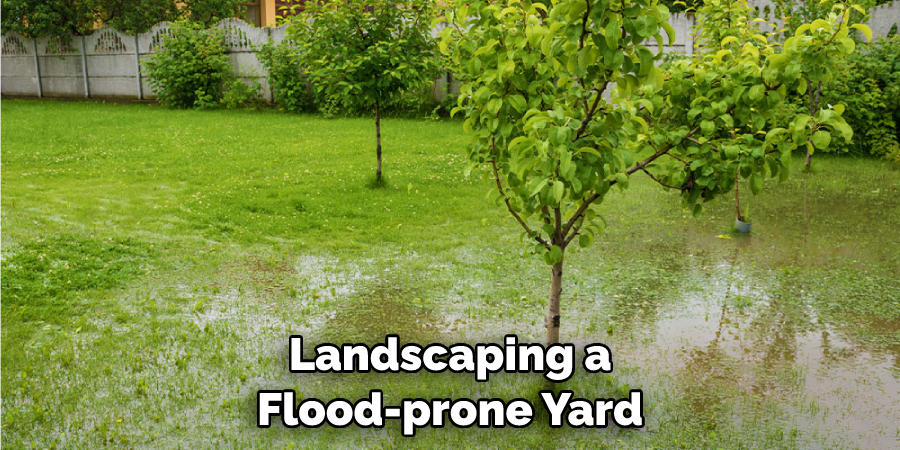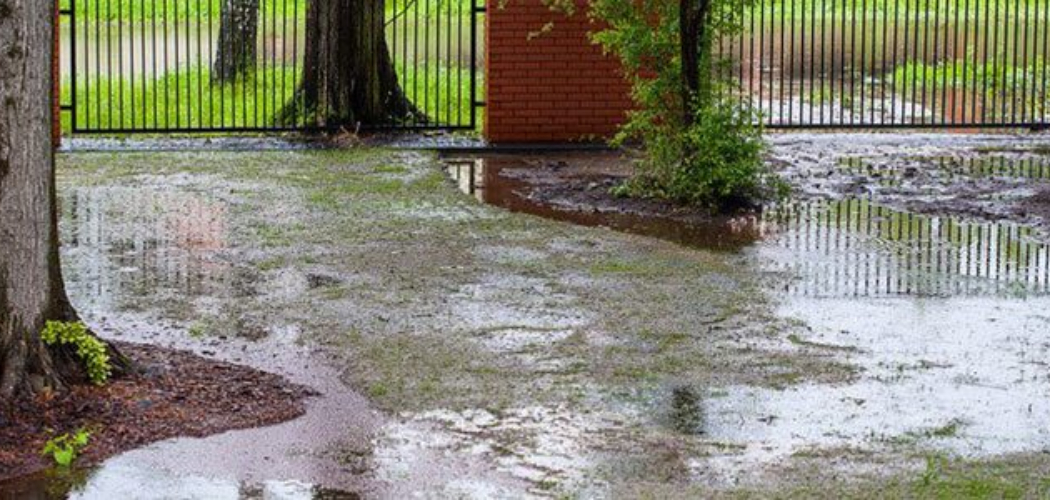Having a yard, especially a nice one, is something that many homeowners strive for. Unfortunately, finding out your yard floods can put a damper on this dream. But don’t worry: it doesn’t have to be the end of creating and maintaining beautiful landscaping. In this blog post, we will discuss tips and tricks you can use to successfully landscape an area that tends to flood.

From choosing plants with good drainage capabilities to strategically placing stones and rocks around the lawn, there are plenty of ways you can make sure your picturesque garden won’t become inundated when water comes pouring in after heavy rain or flooding incidents reach your area.
Gardening can be a great way to express yourself and show off your personality, but when it comes to yards that are prone to flooding, choosing the right plants and landscaping solutions is essential.
Luckily, with some planning and knowledge of the basics of landscape design, you can create a beautiful yard that will not only survive flood waters but will also look great when everything dries out again. In this article, we’ll discuss how to landscape a yard that floods so you can have a beautiful yard no matter what Mother Nature throws at you!
Why May You Want to Landscape a Yard That Floods?
1. To Make Your Yard Look Attractive
Landscaping helps to make any yard look attractive, and a flood-prone yard is no exception. With careful planning and creative design, you can create an aesthetically pleasing landscape despite the flooding issues that may be present.
2. To Prevent Soil Erosion
Flooding can cause soil erosion, which can lead to a loss of soil nutrients, a decrease in the quality of your soil, and, ultimately, an unsightly landscape. Landscaping can help to reduce the risk of soil erosion by providing plants that will better absorb water and helping to create areas where excess water can drain away from your property.

3. To Create a Water-Friendly Environment
By carefully selecting plants and trees that are more resistant to flooding, you can create an environment that is better able to withstand flooding. This will help your yard to remain healthy and attractive, even when it does flood.
Overall, landscaping a yard that floods can be beneficial for improving the appearance of your property and making sure that it is better equipped to handle the potential effects of flooding. With careful planning and creative design, you can create a beautiful landscape despite the floods.
10 Tips On How to Landscape a Yard That Floods
1. Choose Plants That Can Survive Flooding Conditions
It’s important to select plants that can tolerate frequent flooding and extended periods of standing water. Some great plants for this type of landscaping include sedges, rushes, daylilies, canna lilies, and irises.
2. Add Raised Plant Beds
Another way to ensure your landscaping remains unaffected by floods is to add raised plant beds that are out of the way of floodwaters. This will help keep your plants safe and allow them to grow without being inundated by water.
3. Install Rain Gardens
Rain gardens can also be used to landscape a yard that floods as they act like natural sponges, absorbing excess rainwater from heavy storms and flooding events.
4. Choose Porous Surfaces
When constructing pathways and walkways in a flood-prone yard, it’s important to use porous materials such as gravel and crushed stone. These surfaces will allow water to seep through them instead of pooling on top of the surface and staying there for long periods of time.
5. Plant Trees
Trees are great for landscaping a yard that floods, as they not only provide shade and beauty to the area but also act like natural sponges that can absorb up excess rainwater. So you have to be careful while choosing plants for this.

6. Install Retention Walls
Retention walls can be used to help contain floodwaters in certain areas of your yard and prevent them from spreading out and damaging your landscaping.
7. Choose Shallow-Rooted Plants
Shallow-rooted plants such as grasses, succulents, and even some flowers can be a great addition to a yard that floods frequently. These types of plants don’t need deep soil or lots of water to thrive, so they are able to withstand heavy flooding events.
8. Add Rocks and Logs
Rocks and logs can be used as part of your landscaping to help prevent floodwaters from washing away plants, soil, and other features in your yard. These materials also provide functional elements and add visual interest to the landscape.
9. Use Containers
Containers can be used to house plants and flowers in flood-prone areas, as this will keep them safe from being washed away or damaged by rising water levels.
10. Consider Installing Subsurface Drains
Subsurface drains are also an option for a yard that floods frequently, as they can help divert excess rainwater away from the landscaping and into an area where it can safely be absorbed or diverted. This type of drain system can be expensive to install but is worth considering if your yard floods regularly.

Following these tips should help you successfully landscape a yard that floods and keep it looking beautiful all year round! Good luck!
Frequently Asked Questions
What Precautions Should I Take When Landscaping a Flood-Prone Yard?
When landscaping a yard that is prone to flooding, it’s important to keep in mind the potential for soil erosion, property damage, and contamination from contaminants found in floodwaters. To reduce these risks, consider the following:
Plant native vegetation that is more resistant to flooding and soil erosion, use porous materials for hardscaping (such as pavers or gravel), construct berms or swales to help divert floodwater away from your property, and ensure that any drainage systems are properly installed and maintained.
What Types of Plants Should I Use In a Flood-Prone Yard?
When landscaping a flood-prone yard, it’s important to choose plants that are resilient to flooding. Native plants that are accustomed to the local environment and climate are often better suited for withstanding floods than non-native plants. Some native plant species include rush, cattail, sedge, grasses, willow trees, elderberry shrubs, wildflowers, and coneflowers. Additionally, using plants with deep root systems can help hold soil in place and prevent erosion during a flood.
What Are the Advantages of Landscaping a Flood-Prone Yard?
Landscaping a flood-prone yard offers several advantages for homeowners. Structures like berms and swales can help divert floodwaters away from your property, while vegetation helps absorb excess water and prevents erosion. Additionally, landscaping a yard often increases property value, making it easier to sell in the future. Finally, landscaping a flood-prone yard is beneficial for the environment; native plants require fewer fertilizers and maintenance than non-native species and help support the local ecosystem.
What Are Some Challenges of Landscaping a Flood-Prone Yard?
Landscaping a yard that is prone to flooding can be challenging due to the risk of soil erosion and contamination from floodwaters. Additionally, plants may not survive if they are exposed to floods for long periods of time or if they are washed away by powerful currents. Finally, some plants may become invasive if they are not properly managed. It is important to research the types of plants that can best withstand flooding in your area before planting them in a flood-prone yard.
What Are Some Tips For Landscaping a Flood-Prone Yard?
When landscaping a flood-prone yard, it’s important to use plants that are native to the area and have deep root systems. Additionally, using porous materials for hardscaping can help prevent flooding from washing away soil or structures.
Finally, drainage systems should be properly installed and maintained to ensure that excess water is diverted away from your property. With the right precautions in place, you can create a beautiful and resilient landscape that can withstand floods.
How Much Does It Cost To Landscape a Flood-Prone Yard?
The cost of landscaping a flood-prone yard can vary depending on the materials and plants that are used. Generally, native vegetation is more affordable than non-native species, while hardscaping materials like gravel or pavers may be more expensive.

Additionally, installing berms or swales and drainage systems can increase the cost. It’s important to work with a landscaping professional to determine the best materials and plants for your property and budget.
Overall, landscaping a flood-prone yard can be an affordable way to protect your property from flooding while creating an attractive landscape.
Conclusion
Overall, landscaping a yard that is prone to flooding can be an arduous task. However, if followed thoroughly and patiently, these tips and techniques can make landscaping such a yard successful and worth the effort.
Keeping water levels low while directing it away from your home, integrating plants that thrive in wetter soil as well as choosing plants with a higher tolerance for flooding are key to creating a functional and aesthetically pleasing landscape.
We hope this guide on how to landscape a yard that floods have helped you. With some time and dedication, you can instantly transform a hindrance into an illuminated space that provides endless comforts to your family throughout the years.
About
Outdoor Fixes is a distinguished figure in the world of Diy design, with a decade of expertise creating innovative and sustainable Diy solutions.
His professional focus lies in merging traditional craftsmanship with modern manufacturing techniques,
fostering designs that are both practical and environmentally conscious. As the author of diy,
outdoorfixes delves into the art and science of outdoorfixes-making, inspiring artisans and industry professionals alike.
Education RMIT University
(Melbourne, Australia) Associate Degree in Design (Outdoor Fixes) Focus on sustainable design, industry-driven projects,
and practical craftsmanship. Gained hands-on experience with traditional and digital manufacturing tools, such as CAD and CNC software.
Nottingham Trent University
(United Kingdom) Bachelor’s in outdoorfixes.com and Product Design (Honors) Specialized in product design with a focus on blending creativity with production
techniques. Participated in industry projects, working with companies like John Lewis and Vitsoe to gain real-world insights.
Publications and Impact
In diy, Outdoor Fixes his insights on indoor design processes, materials, and strategies for efficient production.
His writing bridges the gap between artisan knowledge and modern industry needs, making it a must-read for both budding designers and seasoned professionals.

